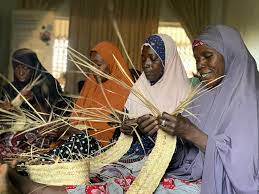
A nail consists of a metal rod or shank, pointed at one end and usually having a formed head at the other, that can be hammered into pieces of wood or other materials to fasten them together.
A nail is usually made of steel, although it can be made of aluminum, brass, or many other metals.
The surface can be coated or plated to improve its corrosion resistance, gripping strength, or decorative appearance. The head, shank, and point may have several shapes based on the intended function of the nail.
Using nails is an effective way of fixing or joining pieces of softwood together. Hardwoods can be difficult to join with nails as they tend to bend under the impact of the hammer.
The surface can be coated or plated to improve its corrosion resistance, gripping strength, or decorative appearance. The head, shank, and point may have several shapes based on the intended function of the nail.
Nails are divided into three broad categories based on their length. In general nails under one (1) inch (2.5 cm) in length are called tacks or brads.
Nails one to four (1-4) inches (2.5-10.2 cm) in length are called nails, while those over four (4) inches (10.2 cm) are some-times called spikes.
These categories are roughly defined, and there is considerable crossover between them.
Based on theirs usage, nails can be classified into
ROUND WIRE NAIL - This is used for general work. It is not attractive in shape and it can split wood when hammered in position
OVAL WIRE NAIL - This is a long nail and care must be taken when it is hammered into the wood. It is unlikely to split the wood.
LOST HEAD NAIL - This is ideal if it is necessary to hide the head of the nail as a punch can be used to hammer the head beneath the surface level.
PANEL PIN - A very popular way of joining woods although glue is usually included as part of the join.
TACK - Can be used for fixing textile materials to wood for example, fixing upholstery to furniture.
SPRIG - This no head and is generally used for fixing glass to glass in wood frames.
ANNULAR NAIL - The teeth of this nail hold it in place firmly. Therefore, it is used for fixing plywood and other materials.
HARDBOARD PIN - The diamond shaped head is hidden when used in materials like hardboard
CORRUGATED FASTENER - This will hold the corners of wood frames firmly together
The product would be packaged in twenty-five (25) kilogrammes polypropylene laminated sack.
In Nigeria, there are infrastructure investments in construction and furniture industry which highly require nails as input. In the housing sector alone, it is estimated that there is a deficit of sixteen million (16,000,000) houses.
Nails are consumed in all construction works and in furniture and fixtures workshops. The current demand for the product is met through domestic production and imports.
The demand for wire nails in Nigeria has been identified to continue to expand as the standard of living of the over two hundred million (200,000,000) population growing at the rate of five point seven percent (5.7%) per annum continues to grow.
With the rise in construction activities, both commercial and private, the demand for wire nails is bound to increase. Setting up a plant to make wire nails would thus meet this demand.






















